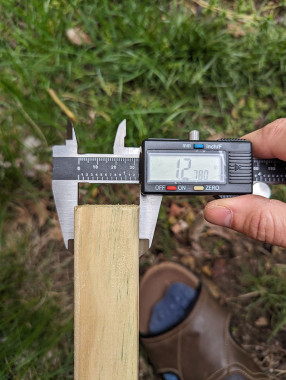2x2 lumber at Home Depot is now 1.28x1.28. Actual size is supposed to be 1.5
I dont know why they have to lie about it. At $5/8ft board you'd think I paid for the full 1.5. Edit: I mixed up nominal with actual.

There have been multiple accounts created with the sole purpose of posting advertisement posts or replies containing unsolicited advertising.
Accounts which solely post advertisements, or persistently post them may be terminated.
I dont know why they have to lie about it. At $5/8ft board you'd think I paid for the full 1.5. Edit: I mixed up nominal with actual.
